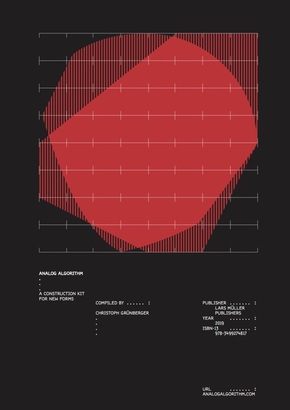Analog Algorithm - Source-Related Grid Systems
| Verlag | Lars Müller Publishers |
| Auflage | 2021 |
| Seiten | 304 |
| Format | 17,0 x 24,3 x 2,1 cm |
| Gewicht | 998 g |
| Artikeltyp | Englisches Buch |
| ISBN-10 | 3037785934 |
| EAN | 9783037785935 |
| Bestell-Nr | 03778593A |
Dieses Buch ist eine Art Werkzeugkasten zur Erstellung neuer Formen. Es beschäftigt sich mit Raster-basiertem Design und vermittelt dem Leser Techniken zur Entwicklung neuer Formen, Schriften, Logos und Muster. Das Konzept stellt einen Gestaltungsprozess dar, in dem individuelle Entscheidungen viel grösseren und tieferen Prinzipien folgen als sofortige und spontan-intuitive Aktionen. Jedes Kapitel enthält anhand einer Vielzahl von Beispielen eine detaillierte Beschreibung des Verfahrens von der Formanalyse über die Erstellung von Designregeln bis hin zu deren Anwendung. Diese Publikation ist sowohl eine Arbeitsmappe als auch eine Inspirationsquelle und bietet Designern und Architekten das Werkzeug, das sie benötigen, um analoge, algorithmische und explorative, aber nie willkürliche Formen zu finden. Die beschriebenen Verfahren erlauben eine nahezu unbegrenzte Anzahl von Möglichkeiten. So wird der Designer vom Erfinder zum Dolmetscher oder Kurator, der individuelle Formen für Logos , Schriften oder Muster im Handumdrehen untersuchen und dafür sorgen kann, dass der Designprozess immer effizient und zielorientiert verläuft.
This book is a tool kit to create new forms. It deals with grid-based design and gives the reader techniques to develop new forms, fonts, logos, and patterns. The concept represents a design process in which individual decisions follow much larger and deeper principles than immediate and spontaneous-intuitive actions. Using a wide variety of examples, each chapter contains a detailed description of the procedure from form analysis to setting up design rules and their application. Both a workbook and a source of inspiration, this publication provides designers and architects with the tool they need to find analytical forms-analog, algorithm-based, exploratory but never of arbitrary origin. The procedures described allow an almost infinite number of possibilities. The designer is thus transformed from inventor to interpreter or curator, who assesses individual forms for logos, fonts or patterns on the fly and ensures that the design process is always efficient and goal-oriented.

